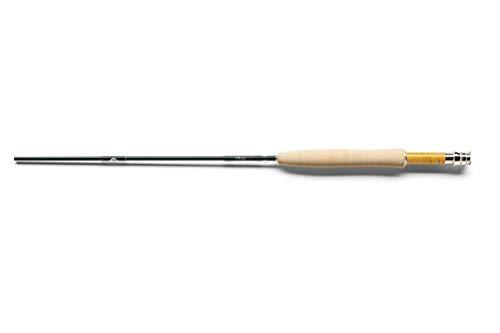How To Have A Successful Fly Fishing Roadtrip
There’s something primal, even a little poetic, about loading up a dusty Subaru or a truck that’s two oil changes overdue and heading toward moving water. You’re not just looking for trout—you’re chasing solitude, mystery, and maybe some mid-stream redemption.
But make no mistake: a fly fishing road trip isn’t just a vacation. It’s a test. Of patience, of preparation, and of how well you and your best buddy (or girlfriend, or golden retriever) can survive 10 hours of country radio and stale beef jerky without filing a restraining order.
So whether you're heading west for cutthroat or down south for bass on the fly, here’s your no-nonsense, soul-satisfying guide to doing the road trip right.
Planning
The first rule of fly fishing travel? Everything will go wrong. Your dream river might be blown out. A wildfire might shut down access. Your buddy might “forget” his waders. Plan A is nice. Plan B is smarter. Plan C might save the trip.
Do this:
Map out 3+ locations with varying elevations and flows.
Use weather and flow apps like RiverFlows, OnWater, or USGS.
Call local fly shops ahead of time—those folks are the real MVPs.
Don’t Overpack the Itinerary
You’re not a fishing robot. Build in time for naps, wrong turns, and the diner with the suspiciously good pie. Trying to fish three rivers in two days will make you hate fishing and each other.
Gear: What to Bring (and What to Leave at Home)
You don’t need a fly shop in your backseat. But you do need enough gear to cover the curveballs Mother Nature loves throwing your way.
Essentials:
2 fly rods minimum: One 5wt and one 8wt covers most things.
Assortment of flies: Think streamers, dries, and nymphs.
Waders and boots (even in summer—you never know).
Rain gear: Always.
Cooler with ice: For beer, fish, or both.
A small fly tying kit: For on-the-go repairs or campfire creativity.
Power bank: Your phone is your map, camera, weather app, and 911 call device.
Hygiene and sanity kit:
Baby wipes (you’ll thank us).
First aid kit.
Headlamp and extra batteries.
Dry bags for clothes and gear.
Duct tape. Always duct tape.
The Drive
Road trip culture is its own weird beast. Somewhere between the 4th gas station and the 3rd “Do you smell that?” moment, it either gets magical or miserable.
The Fishing
Sure, you’re here to fish—but the real payoff is the rhythm of it all. Sunrise on the water. Wind-knotted leaders. The moment the drift is just right and everything else stops.
Best Practices:
Fish early and late: Midday sun puts fish down and burns your neck.
Match the hatch, but don’t obsess—presentation usually matters more.
Talk to locals: They know things Google doesn’t.
Keep your ego in the glove box: Skunks happen. Even to guides.
Camping vs. Motels
You’ll reach a fork in the road: Stay gritty or grab a shower?
Camp Like a Champ:
Look for BLM or national forest spots—usually free or cheap.
Pack a tarp in case your tent fails.
Bring earplugs. Nature’s loud.
When to Upgrade to a Motel:
After 3+ days without a shower.
When the forecast looks biblical.
When the phrase “I think I hear a bear” becomes too frequent.
Final Checklist Before You Roll
✅ Fishing licenses for every state you’re visiting
✅ Car maintenance (oil, tires, spare)
✅ Maps downloaded for offline use
✅ Extra keys in a magnetic box
✅ Emergency contact knows your route
✅ Hydration + snacks
✅ Fly box sorted and labeled
✅ Waders dry and not moldy
✅ Sunglasses, sunscreen, bug spray
FAQs
How many fly rods should I bring on a road trip?
At least two. A versatile 5wt and a heavier rod like an 8wt let you adapt to everything from tiny creeks to bass ponds.
What’s the best way to find fishing spots on the road?
Use apps like OnWater, USGS streamflow data, and local fly shop recommendations. Old-fashioned word-of-mouth still rules.
Is it better to camp or stay in hotels on a fishing road trip?
Both. Camp when conditions allow and your body’s up for it. Motels are clutch when the weather turns or you need a hot shower.
How do I store my catch safely during a road trip?
Bring a cooler with ice, but only keep fish if it’s legal, sustainable, and your camp kitchen is up to the task. Otherwise, catch and release.
What should I do if my main fishing spot is unfishable?
Always have a Plan B. Check nearby tributaries, lakes, or even warmwater spots that can still make for good fly fishing.
What’s the single most overlooked item?
Duct tape. It fixes waders, boots, coolers, rods, and (sometimes) bad attitudes.
// Related Posts About Fly Fishing



















